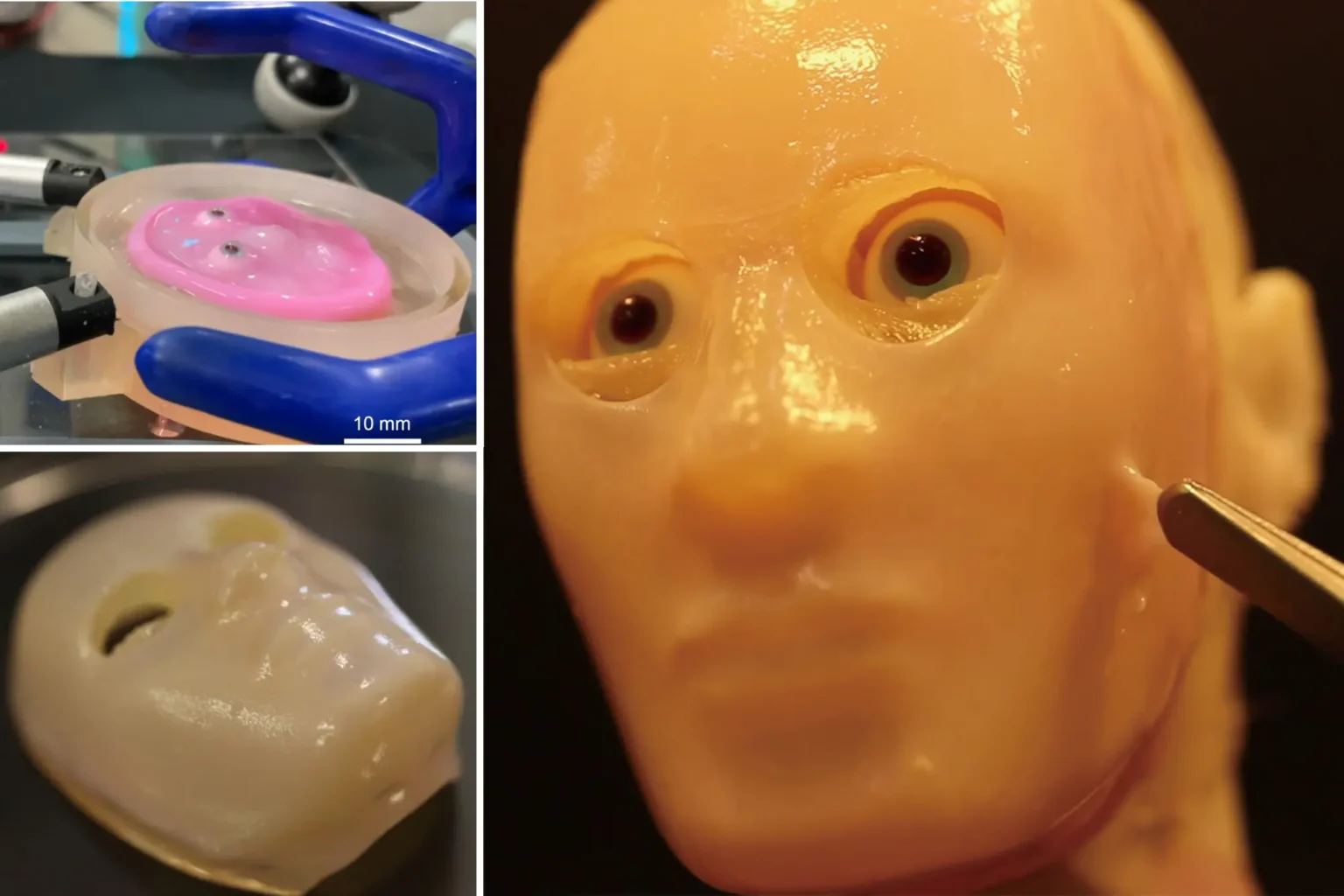Japanese scientists have developed a method to attach self-healing, living skin to a robotic face, enabling it to “smile.” Led by Professor Shoji Takeuchi at the University of Tokyo’s Biohybrid Systems Laboratory, the team successfully connected cultured skin tissue to an actuator using “anchors” that mimic human skin ligaments.
In a video demonstration, the scientists manipulate the skin into a smile without causing it to tear, bunch, or stick. Previous attempts to attach human cell-based tissue to a solid surface would often result in damage when the skin was moved.
Although Takeuchi’s creation currently resembles a character from children’s animation more than a human face, the team hopes this breakthrough will lead to the development of realistic humanoids in the future. Encouraged by the results, Takeuchi is now expanding the project’s scope.
“Our cultured skin aims to replicate the full biological functions of human skin, including facial muscle activity, sweat glands, pores, fat, nerves, and more,” Takeuchi told Al Jazeera. “This could enable more lifelike and interactive robots.”
Proponents of biohybrid robotics believe such advancements could eventually lead to humanoids indistinguishable from real humans, enhancing communication between robots and people. Though the vision of a society cohabited by humanoid robots may seem distant, the concept of biohybrid robots—and the ethical challenges they pose—is gaining attention.
Takeuchi’s team is still in the early stages of its work, which also includes projects on mini robots powered by biological muscle, lab-grown meat, and research on artificial cell membranes, neural networks, and implantable devices. Takeuchi admits that achieving fully realistic robotic skin will take significant advancements in texture, color, and biological integration.
“Our goal is not just to create lifelike robots but to improve their utility and interaction,” he said.
Rafael Mestre, lead researcher at the Biohybrid Futures project at the University of Southampton, has been closely following Takeuchi’s work. Mestre believes the ability to cover robotic devices with protective skin, akin to how human skin shields organs, is an important first step, but acknowledges there is still a long way to go.
Mestre predicts that initial applications will likely involve simple biohybrid robots with basic functions rather than fully humanoid robots with realistic skin. He sees potential uses for such technologies in plastic surgery, anti-aging treatments, and drug testing.
Other areas of biohybrid research include insect cyborgs—an interest of the U.S. government’s DARPA since 2006—and robots designed for environmental cleanups or search-and-rescue missions.
However, concerns about misuse have prompted calls for regulatory safeguards. In a paper published in the Proceedings of the National Academy of Sciences, researchers from the University of Southampton, including Mestre, highlighted three main ethical concerns: how biorobots will interact with humans and ecosystems, the possibility of integrating biorobots into human bodies, and their potential moral status.
Takeuchi agrees that ethical considerations are crucial, stressing the need for transparency and regulation to ensure responsible development and use of the technology.
Mestre argues that ethical discussions must begin before the creation of realistic humanoids. “Are we creating a new form of life? What happens if they’re released into the environment and disrupt ecosystems? Or if biohybrid prosthetics widen societal inequalities due to affordability?” he asked. “This technology is developing with little public or political scrutiny, and we need to start discussing the future we want in relation to it.”


